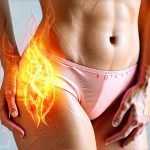Urinary frequency and urgency are common experiences for many individuals assigned female at birth, often fluctuating throughout the menstrual cycle. These changes can sometimes be perplexing, particularly when they seem to coincide with specific phases like ovulation. It’s natural to wonder whether this sudden need to rush to the bathroom is a normal part of the ovulatory process, or if it signals something else entirely. Understanding the intricate interplay between hormonal shifts, bodily functions, and potential underlying causes is key to deciphering these experiences and seeking appropriate support when needed. This article aims to explore the connection between ovulation and urinary urgency, providing information that empowers individuals to better understand their bodies and make informed decisions about their health.
The menstrual cycle isn’t simply a monthly event; it’s a complex hormonal dance influencing numerous physiological processes beyond reproduction. Fluctuations in estrogen and progesterone levels affect everything from mood and energy to digestive function and even the bladder. Ovulation, the release of an egg from the ovary, represents a significant peak in luteinizing hormone (LH), which subsequently triggers changes throughout the body. While many associate these changes with fertility signs like cervical mucus consistency or basal body temperature shifts, less commonly recognized are the potential effects on urinary function. It’s important to remember that every individual experiences hormonal fluctuations differently, and what’s “normal” can vary widely.
Hormonal Influences and Bladder Function
The relationship between hormones and bladder control is multifaceted. Estrogen, for example, plays a role in maintaining the health of the urethral lining – the tissue surrounding the urethra that helps maintain continence. When estrogen levels fluctuate, as they do throughout the menstrual cycle and particularly during ovulation, this can impact the sensitivity and function of the bladder. While higher overall estrogen levels are generally considered protective against urinary incontinence (long-term), the rapid shifts experienced around ovulation might temporarily alter bladder control mechanisms in some individuals. Progesterone, which rises after ovulation, has a slightly different effect – it can cause water retention, potentially contributing to feelings of fullness and urgency.
Furthermore, the surge in LH during ovulation isn’t isolated; it also affects other hormonal systems that can indirectly influence urinary function. For instance, increased levels of prostaglandins—hormone-like substances involved in inflammation—are released around ovulation. Prostaglandins can increase bladder sensitivity and contractility, potentially leading to a more frequent or urgent need to urinate. It’s crucial to understand this isn’t necessarily a negative phenomenon; it’s often a temporary physiological response to hormonal changes.
It is also important to note that the pelvic floor muscles play an essential role in supporting bladder function. Hormonal shifts can affect these muscles, potentially weakening them temporarily or altering their responsiveness. This is why some individuals might notice a slight increase in leakage during ovulation or menstruation. Maintaining strong pelvic floor muscles through exercises like Kegels can help mitigate these effects and improve overall bladder control. If you are concerned about weakness, it’s important to check Is It Normal to Feel Weak During a UTI? as well.
Possible Underlying Factors & When to Seek Guidance
While hormonal fluctuations are often the primary culprit for increased urinary urgency around ovulation, it’s important to rule out other potential contributing factors. – Urinary Tract Infections (UTIs): UTIs present with symptoms like burning sensation during urination, frequent urge to urinate, and cloudy or strong-smelling urine. They require medical attention. – Interstitial Cystitis/Bladder Pain Syndrome: A chronic condition causing bladder pressure, bladder pain, and sometimes urinary frequency and urgency. It often requires specialized diagnosis and management. – Overactive Bladder (OAB): A condition characterized by a sudden urge to urinate that’s difficult to control. This is less directly linked to ovulation but can be exacerbated by hormonal changes.
If the increased urinary urgency is severe, persistent, or accompanied by other concerning symptoms like pain, fever, blood in urine, or difficulty urinating, it’s essential to consult a healthcare professional. Don’t self-diagnose; a proper evaluation can help determine the underlying cause and ensure appropriate treatment. A doctor may recommend tests such as a urinalysis (to check for infection), a pelvic exam, or urodynamic testing (to assess bladder function). For more information on recovery from UTIs, see What Is Normal UTI Recovery Time for Women?.
It’s also wise to seek guidance if the urinary urgency is significantly impacting your quality of life—for example, if it’s interfering with work, social activities, or sleep. A healthcare provider can offer strategies for managing symptoms and improving bladder control, such as lifestyle modifications (reducing caffeine intake, staying hydrated), pelvic floor exercises, or medication (in some cases). Remember that seeking help is a sign of self-care, not weakness. If you suspect urethral pain may be contributing to your discomfort, Is Urethral Pain Common During Menopause in Women? can offer some helpful insight.
Lifestyle Adjustments & Self-Management Strategies
Fortunately, many individuals can manage mild to moderate urinary urgency associated with ovulation through simple lifestyle adjustments. – Hydration: Staying adequately hydrated is crucial, but avoid excessive fluid intake close to bedtime. Sipping water throughout the day rather than gulping large amounts at once can also help. – Diet: Reduce consumption of bladder irritants like caffeine, alcohol, carbonated beverages, spicy foods, and artificial sweeteners. – Bladder Training: Gradually increasing the time between urination can help retrain the bladder to hold more urine. This involves resisting the urge to go immediately when you feel the sensation and slowly extending the intervals. – Pelvic Floor Exercises (Kegels): Strengthening pelvic floor muscles improves bladder control and reduces leakage.
Beyond these strategies, maintaining a healthy weight and avoiding constipation can also contribute to better bladder health. Constipation can put pressure on the bladder, exacerbating urinary urgency. It’s important to note that these self-management techniques are most effective when combined with professional guidance—a physical therapist specializing in pelvic floor dysfunction can provide personalized exercises and strategies tailored to your specific needs.
The Role of Stress & Anxiety
Stress and anxiety can significantly impact bladder function, often exacerbating urinary urgency. When you’re stressed, your body releases cortisol, a hormone that can affect the nervous system and increase bladder sensitivity. This creates a vicious cycle: stress leads to increased urgency, which then increases anxiety, further amplifying the symptoms. Mindfulness techniques like deep breathing exercises, meditation, or yoga can help manage stress levels and reduce bladder irritability.
It’s also important to address any underlying emotional factors contributing to urinary urgency. Sometimes, the fear of accidents or embarrassment can lead to heightened anxiety and exacerbate symptoms. Cognitive Behavioral Therapy (CBT) can be helpful in addressing these thought patterns and developing coping mechanisms. Remember that mental health is integral to overall well-being, including bladder health. Taking steps to manage stress and anxiety can have a profound impact on your urinary function.
It’s important to reiterate that experiencing increased urinary urgency around ovulation isn’t automatically cause for concern. For many individuals, it’s a normal physiological response to hormonal fluctuations. However, paying attention to your body, recognizing potential underlying factors, and seeking professional guidance when needed are essential steps in maintaining overall health and well-being. Understanding the intricate relationship between hormones, bladder function, and lifestyle choices empowers you to navigate these experiences with confidence and make informed decisions about your care.





















